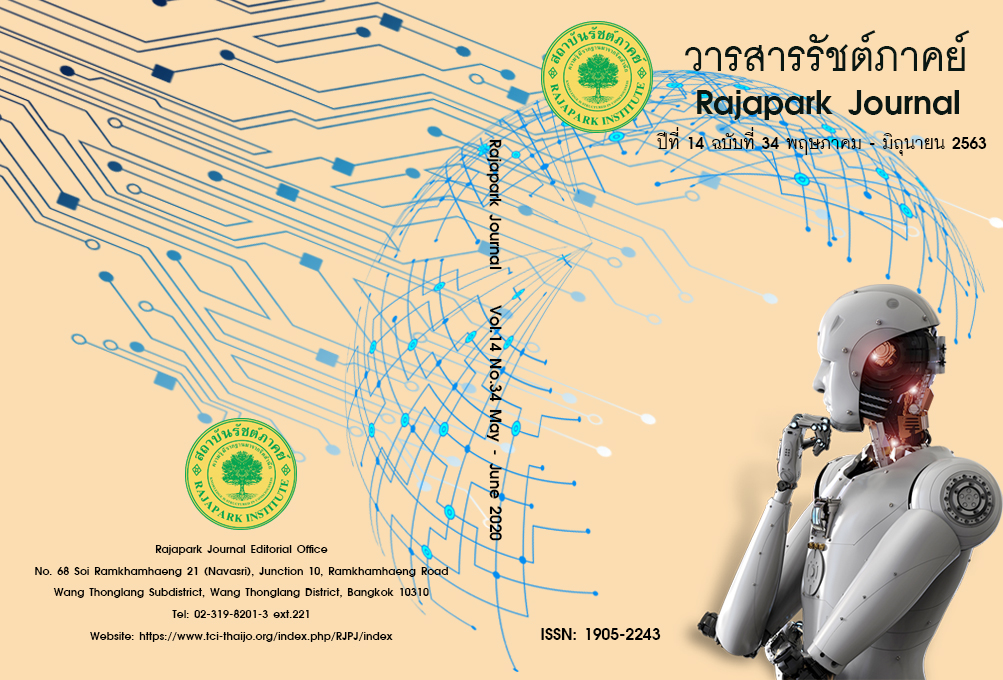The Study of Thai Traditional Medicine Wisdom from Thai Folk Healer’s Books, Phetchabun Province
Main Article Content
Abstract
This research aimed to study the exchange, transcribe, analyze, and categorize the information from Thai folk healer’s books. This is documentary research from the Thai manuscript, Mr. Somjit Phetkerd, a folk healer in Phetchabun province. The results showed that the diseases and symptoms were divided into 8 groups which are 1. Toxic diseases 2. Fever 3. Skin Diseases 4. Diseases related to wind 5. Gynecology diseases 6. Pediatric diseases 7. Urinary tract diseases and feces 8. other. There were recorded 268 herbal recipes. Medicinal plant material is divided into 459 types, ginger has been used the most. There are 29 herbs from animals, ivory is the most used and there are 28 types of herbs from the element, alum is used the most. There are 26 herbal coordinates divided into 2, 3, and 5 herbals coordinate. It was found that there are 13 methods of compound medicine and varies. There are 37 types of solvent medication, washing rice water used the most. Therefore, Thai traditional medicine wisdom from Thai folk healer’s books is valuable wisdom that should be protected, promoted, and conserved to be used and passed on to the next generation.
Article Details
Views and opinions appearing in the Journal it is the responsibility of the author of the article, and does not constitute the view and responsibility of the editorial team.
References
Chaithongdee, C. & Pongchaliew, K. (2014). The query of wisdom from pharmacopeia palm leaf
manuscripts in Sisaket Province. Bangkok: Office of the Higher Education Commission.
Keinhom, U. & Nakawong, S. (2011). Revision and Analysis of Important Information about
Traditional Medicine of the Norteast Re-corded on Palm Leaves. Journal of Thai Traditional & Alternative Medicine. 9(1), 20-26.
Kulsomboon, S. et al. (2011). Guideline to assessing folk healers (2nd ed.). Bangkok: Sam Charoen
Panit.
National Health Commission Office. (2009). Statute on the National Health System 2009.
Nontaburi: Wiki Printing.
National Library of Thailand. (2009). Survey and Supply Ancient documents is palm leaf
manuscripts and Thai books resource Handbook. Bangkok: Cabinet and Royal Gazzette Publishing Office.
Office of the National Economic and Social Development Council. (2017). The Twelfth National
Economic and Social Development Plan (2017-2021). Retrieved June 1, 2019, from
http://www.nesdb.go.th/download/article/article_20160323112418.pdf.
Paiboonwangcharoem, P. (2010). Thai traditional textbook recipe. In Chapter 5 Thai traditional
medicine wisdom and folk medicine. In Chokevivat, V. et al., (Eds.). Thai Traditional and Alternative Health Profile, 2014 – 2016 (pp.199-313). Bangkok: WVO Thai Printing.
Protection and Promotion of Traditional Thai Medicine Wisdom Act B.E. 2542 (1999). Published in
Government Gazette. Vol. 116, Part 120, 49-63.
Rawarin, N. (2011). Palm leaf manuscripts: Conservation for use. In Weena W. et al. (Eds.). Article
of conserve, restore and integration. Mahasarakham: Apichart Printing.
Sridharmma, K., Tongharmmachat, S. & Kempila, P. (2009). The Research on the Wisdom of Local
Isan Medicine in Khamphi Bai-Lan (Scripture Written on Palm-leaves). Rajabhat
MahaSarakham University Journal, 3(2), 13-19.
Sueasuphan, K., Chimphi J. & Kwangchayphum. (2010). Survey, translation, and analysis of
Traditional Isan medical text books from palm leaf manuscript in Phumkae Sub-District,
Nakae District, Nakhon Phanom Province. (Research report). Mahasarakham: Mahasarakham university.
Thai Traditional Medical Council Professions Act B.E. 2556 (2013). Published in Government
Gazette, Vol. 130, Part 10 A. Retrieved December 26, 2019, from
http://www.ratchakitcha.soc.go.th/DATA/PDF/2556/A/010/1.PDF.
Virapracak, K. (2002). Saranithet chak khamphi bailan samai Ayutthaya. Bangkok: Fine Arts
Department.
Wisungre, S. (2014). A study of wisdom folk healers in Amphur Muange Phetchabun province
(Research report). Phetchabun: Phetchabun Rajabhat University.


